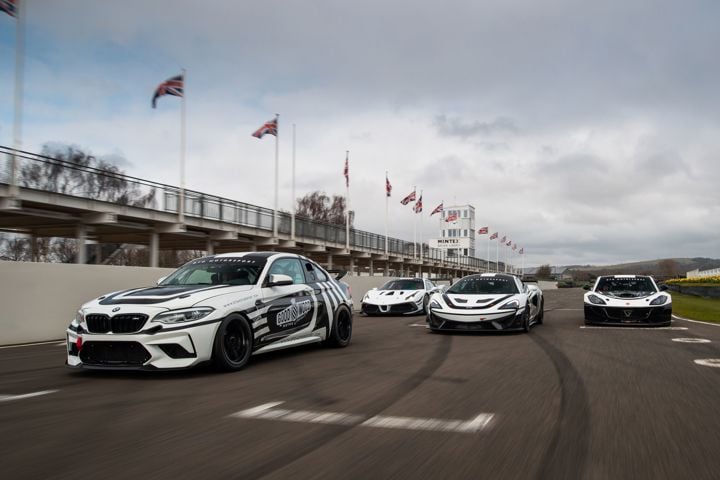The FW19 marked the end of an era for Williams and Renault
The year is 1997, and the Rothmans Williams Renault Formula 1 team is on a residual high from an incredibly successful 1996, in which Damon Hill and Jacques Villeneuve drove the FW18 to first and second places, securing the Constructor’s Championship by a huge margin of 105 points.

Faced with the task of repeating that feat, Williams presented the FW19, an evolution of its predecessor, featuring a carbon-fibre and honeycomb composite structure and powered by a Renault RS9 naturally aspirated V10 engine.
The powerplant was a different beast to its predecessor, with a widened ‘V’ (from 67 to 71 degrees), an 11kg weight saving and a 27mm lower mounting – resulting in a 14mm lower centre of gravity.
Running it in a FW18B chassis during the winter testing allowed the team to smooth out any teething issues, and by the start of the 1997 season the engine proved powerful and reliable, reportedly topping 740bhp at 17,000 rpm in its inaugural race.
The new car’s Williams-Komatsu six-speed, transverse semi-automatic gearbox was more compact than that of its predecessor, while the lower crankshaft enabled a lower transmission, resulting in better aerodynamics at the rear end. Meanwhile, an extensively revised cooling system worked to decrease drag compared to the old cooling system.
While not an extraordinarily innovative car for Williams, it was momentous for the fact that it was both the last Williams chassis to receive input from designer Adrian Newey, who absconded to McLaren during the ‘97 season, and the last to run a works Renault engine before the manufacturer’s hiatus.
With Hill now departed for Arrows, Heinz-Harald Frentzen took up the second seat beside Villeneuve, and despite the prevalent threat of Schumacher and Ferrari, the pair got off to a good start in the season opener in Australia, with Villeneuve taking pole and Frentzen joining him on the front row. Unfortunately, a bad start saw the Canadian taken out of the race early on and Frentzen didn’t fare much better, with his brakes failing three laps from the end.
While the ensuing two rounds, in Brazil and Argentina, proved fruitful for Villeneuve, with consecutive wins, Frentzen fell by the wayside with a ninth position and a retirement. But Frentzen’s turn came at April’s San Marino Grand Prix, where he took his first ever F1 victory, and his only of the season. Villeneuve, meanwhile, retired with gearbox problems. At the following round, Frentzen took his first career pole, but both drivers ultimately retired due to accident damage.

Villeneuve again took pole and victory in Spain, before retiring at the following round in Canada. He was back on winning form by the British GP, and again at the Hungarian race, while Austria and Luxembourg took his race win toll to seven. Notably, he was disqualified from the penultimate race in Japan having ignored yellow flags on two consecutive laps during practice.
In the background, Frentzen was chugging on, winning the occasional second place and a brace of thirds. Despite retiring from a total of five of the 17 races, and only winning one race, his second place in Japan meant the Rothmans Williams Renault team had secured the Constructors' title. Meanwhile, Villeneuve took the Drivers' Championship, despite a controversial collision with Schumacher in the season finale at Jerez, in which Schumacher was accused of deliberately colliding with the Canadian. And despite only winning the one race across the season, Heinz-Harald Frentzen finished second in the Drivers' Championship due to Schumacher's being excluded following the incident.
Was the FW19 quite as impressive as the FW18? Its on-track records suggests not. Then again, it had big boots to fill and, ultimately, still secured the drivers’ and constructors’ crowns. A bad car? Far from it.
Photography by James Lynch, main image courtesy of Motorsport Images.
Formula 1
F1 1997
Williams
FW19
Damon Hill
Jacques Villeneuve
Heinz-Harald Frentzen












